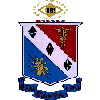6.801/6.866 Machine Vision (U)
Seeing the Future
(3.4
4.4
9.2)
Lecturer: : B. Horn
Lecturer's Rating: 5.9/7.0
Prerequisites: 18.01,18.02,18,03,18.06,6.003,Comfortable with math
|
Response rate: 20 out of
Difficulty: 5.0/7.0
Overall Rating: 5.8/7.0
Term Evaluated: Fall 2004
|



Lecturer's Comments:
Understanding the physics of image formation is a prerequisite for
developing methods for recovering information about the
three-dimensional world from mere two-dimensional projections.
Inevitably the physics leads to a mathematical formulation that can
then be exploited. The course explores the "physics based" and
"inverse graphics" approaches to optical flow, motion vision,
photogrammetry, binocular stereo, shape from shading, shape
representation, recognition and pose determination. Also covered are
methods of applicability in industrial machine vision such as binary
image processing, pattern matching, and edge and line finding. Some
students find it exciting to apply familiar techniques of applied mathematics
to particular practical problems in machine interpretation of sensory
data.
None
An introduction to the field of machine vision, taught by one of the
prolific contributors in the field. The class concentrates more on the
mathematical foundations and fundamental concepts of low level vision
processing and less on implementation of these ideas. The idea is that
these fundamental ideas that machine vision is based on will not
change, even as technology changes.
|
WHAT'S HOT
- Prof. Horn and Horn’s lectures
- Problem sets
- Take home exams
- Humorous lectures
|
WHAT'S NOT
- Grungy Math
- To much theory
- Lack of course notes
|
The majority of students took this class because either they were
interested in the subject, needed it for their research, or it
fulfilled a requirement. The students felt that it could give them
strong background in the area and a building block in such areas as
medical imaging, pattern recognition and other advanced topics.
Students recommended that anyone interested in machine vision for
research should take this class, but said that it is not for those
interested in learning about applications of machine vision because it
is so theoretical.
Lecturer B. Horn
(5.9/7.0, 20 responses) Most students felt that Prof. Horn had a very
good presentation style and was very knowledgeable in the area. Many
students complained that there was too much to write down in class and
that made it hard to understand the lecture. Most of the students
agreed that this could be fixed if course notes had been handed out.
Students also felt that Prof. Horn has a good teaching style, used the
blackboard well and had great humor, the jokes through the lecture
really added to the enjoyment. Some students felt that the lectures
were to0 quick and that Prof. Horn went into to much details in math
proofs instead of giving the big picture.
TA Y. Fang
(5.9/7.0, 14 responses) All together students were very happy with
Fang. She did not teach a recitation, but had office hours, answered
questions about the problem sets and graded the problem sets. They said
she was very helpful in office hours and always willing to stay late.
Students also said that she replayed to email very quickly and was
available when ever they need her. In addition, the students said that
she was a fast homework grader and was very generous when giving
extensions. Some students felt that she was sometimes unclear when
answering emails and didn’t always listen to students question.
On average students spent 11 hours on each problem set. There were five
problem sets through out the term. All together students felt that the
problem sets were very useful, well designed and helped understand the
material. A lot of students did feel that the problem set were too math
intensive and difficult. One student even said that “Some problems were
too involved in grungy math that you forget what the point is.” In
addition, some felt that the problem sets were not clear at time.
There was no lab for this class. Graduate students taking 6.866 did
have to complete a final project. The projects were done
individualistically and the students could freely choose in what area
they wanted to do their final project. Most students felt that projects
were fun and that through the projects they got to apply what they
learned in class. A few students did feel that the project expectations
were too vague.
The readings consisted of the course text book which was written by the
professor. Most students found the text relevant and helpful. But many
did complain that the text book was a little outdated and tended to be
too concise. Most students said that class notes would have been
useful.
The grading policy was as follows:
6.801 - Undergraduate section - 50% Problem sets, 50% Take home exams
6.866 - Graduate section – 33% Problem sets, 33% Take home exams, 33%
Final Project
The two exams were in a take home exam format. Most students liked the
take home exam format. They said that the take home exams were slightly
longer problem set, but similar in difficulty and very fair. Some
students did feel that the exams were difficult and too long.
Very Theoretical, not applied
Be ready for alot of math.
Go to lecture, essentail.
"Learn all the cool stuff you can do with low level processing"
"Horn really only teaches his contributions to the field and
no one elses. The flip side to that is that he's made so many
contributions that is is not a bad way to learn"
"The notion that
Dated: March 06, 2005
Eta Kappa Nu, MIT









